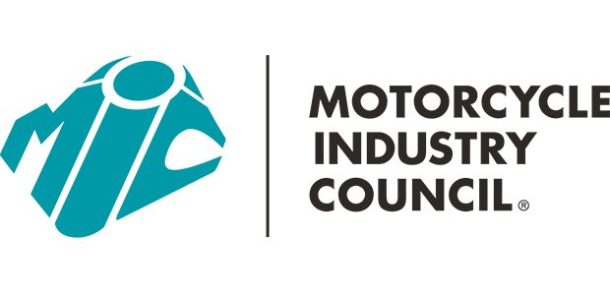September 3, 2007 – KTM accelerates its North American sales
By Neil Pascale
Editor
PROVIDENCE, R.I. — KTM North America is feeding off its niche race-ready platform and reluctance to leave an area that other OEMs are straying from to register improving sales in markets that are trending downward for the rest of the industry.
KTM North America President Jon-Erik Burleson told the company’s dealer network at the Rhode Island Convention Center Aug. 20 that the manufacturer has increased its new unit sales by 21 percent compared to the year-ago period.
Other numbers reflecting the Austrian company’s growing North American business also were disclosed during the meeting where dealers saw the company’s first entries into the sport quad market and were told about plans for a superbike for 2009. Some of those improving North American numbers included:
A 16 percent increase in PG&A sales, despite difficulties the company has experienced recently with fill rates;
A rising off-road motorcycle market share that has eclipsed the 20 percent mark in the United States and is now nearing 35 percent in Canada; and
A nearly 8 percent improvement in dealer inventory for youth bikes.
KTM’s plan for the North American market as outlined by Hubert Trunkenpolz, the director of sales and marketing for the parent company, KTM Power Sports AG: become the leading European manufacturer of powersports products. The company will strive to achieve this by building off its heritage of off-road success, enlarging its first foray into the ATV market and developing its relatively new street motorcycle lineup. Those on-road additions undoubtedly will come in the sports bike market.
“We will never touch the cruiser segment,” Trunkenpolz said. “This is not the playground of KTM.”
What is part of the ever-growing KTM playground is sport cars.
Partly in an effort to increase its brand image, KTM unveiled a sport car, called X-BOW, at the Geneva International Motor Show in March. The result: an unexpected surge of orders for the cars, which were selling at euro 40,000 ($54,000). That includes 300 orders from North America, Trunkenpolz told Powersports Business. “It’s unbelievable,” he said, noting the car has not even arrived in the U.S. yet.
Trunkenpolz told dealers that KTM will bring the sports car, which is street legal in Europe, to the U.S.
“We will find a way,” he said.
Harald Plockington, KTM Powersports AG’s director of development, purchasing and production, said KTM is able to make the X-BOW street legal in Europe because of a regulation that allows less stringent emission rules for cars that fall under a certain production volume. Plockington said there are different emissions rules in North America “that we can not fulfill at the moment. We’ll see what we can do about it or bring it over as a track-only version.”
Plockington and Trunkenpolz told Powersports Business that they expect the X-BOW to come to the U.S. in 12-15 months, if not sooner.
KTM North America President Burleson said he would not mind seeing the X-BOW as a race track-only vehicle, citing the increasing amount of people in the U.S. who are now creating private race tracks that have country club-type environments.
“I’m very impressed by the number of people that are contacting and talking to us,” Burleson said of the interest around the X-BOW, “and they’re excited, even almost more excited in some cases by a track-only car. For me, a track-only car in the U.S. is a very solid message: ‘We build ready-to-race vehicles.’ This sport car is a ready-to-race vehicle. It’s most comfortable on a really exciting track.”
Trunkenpolz indicated that KTM North America powersports dealers might sell the sport cars in the future. Currently, KTM offers its European dealers the opportunity to sell them — with a commission of euro 1,500 per car ($2,000) — although the distribution and vehicle service maintenance is left to Audi/Volkswagen auto dealers. The sport car’s power train is supplied by Audi, and the two companies have agreed on a global distribution.
“What we’ve seen is a lot of the (sport car’s) potential customers are already KTM customers and motorcycle riders,” he said. “Some of them are getting older and thinking about changing from two wheels to four wheels. And this was one of the ideas behind (the sports car): we
didn’t want to lose these guys. We wanted to keep them (as customers) and offer something from KTM that they can still ride, race or drive. And the car does it perfect.”
Also coming in KTM’s future is the RC8, a superbike that will launch this spring in Europe and be available in the U.S. for the 2009 model line. The RC8 will feature 150-plus hp, an “extreme weight-reduced frame,” a new engine and adjustable ergonomics, from the handlebar to the footpegs to the seat. Plus, compared to the Super Duke, the time from when the RC8 hits the European market to when it comes to North America will be much reduced.
“We’re committed to bringing those products (quicker) to the U.S.,” Burleson said. “No more of this gap,” which he noted was a couple of years for the Super Duke and figures to be only six-seven months for the RC8.
The developing street lineup, just in its second year in North America outside of the Adventure series, will include a new Duke, the 690, as well as an additional color option for the Super Duke. The first KTM street sport bike featured in North America also will expand to include an R model that will be track-ready with a more aggressive suspension and more horsepower.
“From a total units perspective, it’s not giving us a big percentage growth,” Burleson said of KTM’s new street lineup. “It’s giving us solid unit growth,” he said, noting about 20 percent of the company’s new unit retail sales growth comes from street bikes. “The largest portion of our share is coming from our overall off-road product lineup.”
Unlike many manufacturers, that lineup includes two-stroke options, something KTM officials made clear they’ll continue to offer. While other OEMs have converted to four-strokes due mainly to more stringent emission standards, KTM continues to work with its two-stroke engines to meet those standards, believing the two strokes offer several benefits.
For youth bikes, “it’s the best value for the price you can get,” Plockington said of two strokes. “You can really be competitive. But it’s not only the price of the bike itself, it’s also about maintaining it. If you’re a little bit skilled, you can maintain your bike by yourself. It’s not as complex as the competitive four-stroke.”
Plus Trunkenpolz said KTM has seen “there is a real revival of the two stroke in the high-end competition races” in Europe, something Burleson also has noticed in the U.S.
“Our strategy is to have the top end and best product in both categories,” Trunkenpolz said of the two- and four-stroke bikes. “It’s up to the rider’s choice.”
Riders will get even more choices this year as KTM updated nearly all of its off-road motorcycle lineup, not to mention displayed its first sport quads.
Now that the company has developing street and quad lineups, will they look to other powersports segments? Probably not, at least for the short term. Both Trunkenpolz and Plockington said KTM has no interest in delving into the PWC or snowmobile markets.
Instead, Burleson said the company will focus short-term on broadening its street and quad product lines.
“As a company, we needed to get into those markets,” he said. “Now we need to develop those markets. We’re in the off-road market, and we are developed. We need to strategically maintain (the off-road market). Street, ATV, sport car, those are growth markets for us.”




